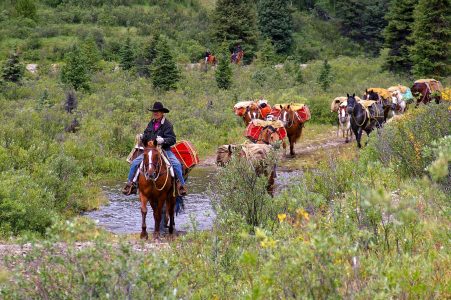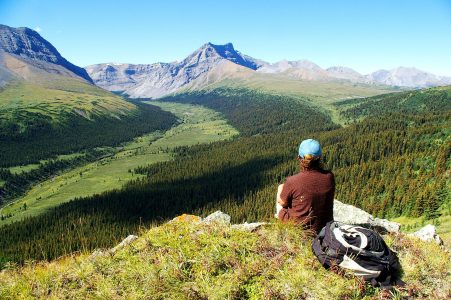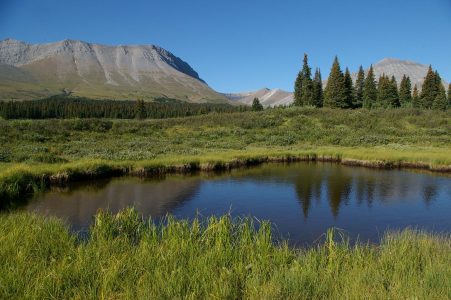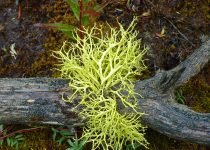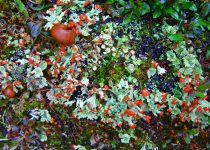
Rising to over 3,050 metres above sea level and covering more than one million acres, Willmore Wilderness Park stands as one of Alberta’s last true wilderness areas virtually untouched by industry and development.
- •
- •
- •
Home to many of Alberta’s iconic species, including grizzlies, wolves, and caribou, the Willmore Wilderness Park is an intact piece of Alberta’s Rocky Mountains. This area requires a proper management plan and continued protection from development.
- Introduction
- Features
- Concerns
- History
- Archive
- Other Areas
- pressure for inappropriate development such as commercial recreational use, including downhill ski operations, golf courses, and alpine villages. New roadways for off-highway vehicles (OHVs) have also been proposed in and near Willmore Wilderness Park,
- commercial sales of registered traplines that would include increased and out-of-season use of OHVs, and the growth in size and numbers of associated cabins, and
- pressure to remove boating prohibitions for the section of the Smoky River in the park.
 |
 |
Exposed mountains, alpine meadows, sub-alpine forests, rivers, creeks, lakes, and tarns, Willmore offers a rich diversity of habitat and climate. PHOTO: © AWA FILES |
Protected under its own Act and home to many of Alberta’s iconic species, including grizzlies, wolves, and caribou, the Willmore Wilderness Park is an intact piece of Alberta’s Rocky Mountains. Traditional, low impact activities including backcountry hiking, equestrian trail riding, hunting, and trapping are permitted within the park, continuing the rich heritage of indigenous peoples and the early explorers and outfitters of the Willmore area.
 AWA’s Willmore Wilderness Area of Concern JPG PDF MAP © AWA FILES
AWA’s Willmore Wilderness Area of Concern JPG PDF MAP © AWA FILES
Bordered on the west by British Columbia, the Willmore is north of Jasper National Park and south of Kakwa Wildland Provincial Park. Rock Lake Provincial Park, Sulphur Gates Provincial Park and Big Berland Provincial Recreation Area provide access points. The town of Grande Cache is north east of the park.
Status
The Willmore was designated a Wilderness Provincial Park in 1959 and was 5566 km2. In 1963, and again in 1965, the park was reduced in area to its current size of 4,568 km2.
Management
Unlike the majority of protected areas in Alberta, Willmore is not governed under the Provincial Parks Act or the Wilderness Areas, Ecological Reserves, Natural Areas and Heritage Rangelands Act. Instead, it is protected under the Willmore Wilderness Park Act (1959). This special legislation states:
“The Park is dedicated to the use of the people of Alberta for their benefit, education and enjoyment, subject to this Act and the regulations, and shall, by the management, conservation and protection of its natural resources and by the preservation of its natural beauty, be maintained for the enjoyment of future generations.”
The Willmore Wilderness Park Act protects the area from development within park boundaries. The Act does allow the park boundaries to be increased or decreased at the discretion of the Lieutenant Governor in Council. Historically, park boundaries have been reduced to allow for industrial development and park boundaries have never been increased.
The Eastern Slopes Zoning Policy (1977) classifies Willmore as a Prime Protection Zone. Under this classification, mineral exploration and development, petroleum and natural gas exploration and development, commercial timber operations, domestic grazing, cultivation, industrial development, residential development and recreational off-highway vehicle use is prohibited. Hunting, fishing, outfitting by horse, primitive camping, horseback riding and hiking are permitted uses.
The Forests Act (1976) limits motorized vehicle access and restricts the building of fixed-roof structures. Government patrol cabins and cabins and off-highway vehicles associated with registered trap lines are the only exceptions.
Federal Order No. SOR/66-406 prohibits the taking off or landing of aircraft at any time within the Park without permission.
The Canada shipping Act, through an order in 1978, amended the Boating restrictions to eliminate all motorized boat use on the Smoky and Berland Rivers within the Willmore Wilderness Park. (Order in Council P.C. 1978-3636)
The Wildlife Management Plan (1980) focuses on preserving the integrity of Willmore Wilderness through habitat and wildlife inventory, and maintenance of wildlife populations.
There is presently no management plan for the Willmore. The Willmore Wilderness Park Management Plan (Draft, 1980), was never completed, and to this day AWA remains concerned with the lack of an overarching plan to guide day-to-day management of this vital wilderness.
The Willmore Wilderness Fire Management Plan divides the park into an “extensive zone,” where wild fires are allowed to burn under most circumstances, and an “intensive zone” where full fire suppression is practiced.
Vision
AWA’s vision is for Willmore Wilderness Park to remain an undeveloped backcountry wilderness area. Achieving this vision will require a Management Plan that holds true to wilderness, watershed, and wildlife values. UNESCO World Heritage site designation under an expanded nomination for the Canadian Rocky Mountain Parks would give this Alberta wilderness recognition that is long overdue.
Area
Willmore Wilderness Provincial Park is located in the ‘elbow’ of Alberta at the top of the Rocky Mountain range just south of Grande Cache. The 4,600 km2 park borders British Columbia, Jasper National Park, Kakwa Wildland Park, and Rock Lake–Solomon Creek Wildland Park.

Township and Range map: JPG | PDF
Watershed
Originating in Jasper National Park and snaking north to Grande Cache and beyond, the Smoky River is the largest river in the park, with many smaller rivers and creeks draining into it. Other important rivers within Willmore Wilderness include the Berland, Wildhay, and Muskeg Rivers in the east and the Jackpine, Muddywater, and Sheep Creeks in the western part of the park. There are numerous lakes and unnamed tarns tucked in the valleys and alpine slopes throughout the park. The Smoky River drains into the Peace River, while the Berland and Wildhay Rivers flow into the Athabasca. All water originating in Willmore eventually flows into the Mackenzie River system.
Natural Regions
Willmore is located within the Rocky Mountain Region and contains four subregions: Alpine, Subalpine, Upper Foothills, and Montane. The Alpine subregion is characterized by lands above treeline including tundra, rockland, snowfields and glaciers. Sub-alpine subregion characterized by forests of lodgepole pine and Engelmann spruce. The Smoky River valley is classified under the Upper Foothill subregion. Only a small portion near Grande Cache is classified as Montane.

Natural Subregions map: JPG | PDF
Environmentally Significant Areas
The entirety of Willmore has been designated an internationally significant area under the Government of Alberta’s Environmentally Significant Areas (ESAs). Additionally, almost all of Willmore was designated a Prime Protection Zone under the Eastern Slopes Policy (1977). Under this designation, the objective is the preservation of “environmentally sensitive terrain and valuable ecological and aesthetic resources.”
Today, the Willmore retains its environmental significance as a large, undisturbed environment with a variety of high quality habitats for large mammals, including Rocky Mountain goats, grizzly bears, and woodland caribou. Of particular importance is Willmore’s large tracts of ungulate winter range habitat. The windswept ridges, blown snow-free by warm Chinook winds allow Mountain goats, bighorn sheep, and elk easy access to high quality food. The western portion of the Willmore lacks the climate conditions required for good winter ranges – and is often covered by many feet of snow – but contains ideal forage for these same species in the summer months.

Environmentally Significant
Areas map: JPG | PDF
Vegetation
The Willmore’s diverse environments allows for a multitude of vegetation types and ecological communities. Vegetation found in the Willmore is typically determined by elevation, however, moisture differences are also an important factor, as western areas can receive as much as three times more precipitation than the eastern areas.
The vegetation in Willmore Wilderness Park is characteristic of the Rocky Mountain Natural Region with spruce-fir and pine forests at lower elevations and mosses, lichens, and other dwarf plants at the higher altitudes. The spruce-fir forests are dominated by white spruce, Engelmann spruce, and alpine fir. Mosses, lichens, and other shade tolerant plants can be found on the shaded and cool forest floor. Younger stands of lodgepole pine are found in areas of previous forest fires.
At higher elevations, conditions are barren and rocky. Only mosses, lichens, and other hardy plants are able to survive.
In wetter, boggy areas, such as the poorly drained floodplain of the major rivers and some smaller streams, willows, black spruce, and sphagum moss are found. Alpine meadows of grasses, sedges, and herbs grow in the valleys. In the summer, showy displays of alpine flowers can be found in meadows, including paintbrush, elephant head, and mountain marigold.
In the eastern part of the Willmore, windswept south facing slopes create drier, prairie-like conditions. Grasses, pasture sage, cinquefoil, wild rose, and other prairie species grow throughout the grasslands of this area.
Wildlife
Willmore Wilderness is home to some of Alberta’s iconic wildlife species and contains crucial habitat for grizzly bears, woodland caribou, and mountain goats. In the winter, exposed, snow-free slopes provide high quality habitat to bighorn sheep and goats. Caw Ridge, an adjacent area and once part of Willmore, is home to the largest population of mountain goats in Alberta. In the summer, caribou frequent the meadows and alpine slopes found near the Alberta-British Columbia border, while migrating to the subalpine old-growth forests in the Smoky River drainage. Caribou, adapted with wide snowshoe-like hooves, feed on hanging “old man’s beard” moss, found on old-growth trees, when snow covers their summer-time food sources. Boggy areas contain nutritious forage for moose, elk, and deer, though all three species are also commonly spotted among the willows along trails and streams.
The area is also home to many large carnivores. Notably, the area has historically contained a high density of grizzly bears, thought to be a virtue of Willmore’s lack of disturbance. While grizzlies are often sighted in the headwaters of Muskeg Creek and Berland River, black bears are found throughout the entirety of the park. Wolves are also present in the Willmore, and are typically found in valleys and river courses, near populations of mule deer and elk.
Other carnivores, such as weasels, martens, wolverines, foxes, coyotes, lynxes, and cougars are also numerous in the area, as are smaller mammals, such as squirrels, chipmunks, pikas, and hoary marmots. Willmore’s bird species are similar to those found in nearby National Parks: grouse, ptarmigan, birds of prey, and some migratory ducks and geese.
Owing to their limited productivity and fluctuating water levels, the lakes, streams, and watercourses contain relatively few numbers of fish. However, while lacking in frequency, the area is home to several species of fish, including bull trout, Rocky Mountain whitefish, Arctic grayling, and rainbow trout.
Geology
The diverse scenery in the Willmore is a product of different rock types, complex folding and faulting, and erosion by running water and glacial ice. As the ice sheets receded at the end of the last glacial period, alpine glaciers gouged out many of the river valleys to their present U-shapes and created such landforms as cirques, aretes, and cols.
Three physiographic units can be recognized within the Willmore area: the Foothills, the Front Ranges, and the Main Ranges of the Rocky Mountains. Although not always distinguishable on the surface, the physiographic units are characterized by different rock types, formations, and mineral resources.
The Foothills physiographic unit is only present in the eastern corner of the park. Rocks are composed of easily eroded sandstone, shale, and conglomerate, giving ridges a rounded look. The Luscar formation, which contains a number of coal seams, is present in this unit.
The Front Ranges are characterized by limestones and dolomites and is the main physiographic unit in the Willmore. A complex series of folds and faults, producing numerous anticline and synclines, add to the spectacular scenery of the Front Ranges.
The Main Range is characterized by relatively flat layers of quartzite and carbonites that have been uplifted over five vertical kilometres above the corresponding strata in the Front Ranges. This unit contains the Willmore’s oldest rocks and highest mountain ranges.
Cultural
The Willmore has a long and rich heritage for Indigenous peoples and early outfitters. With the help of Iroquois guides, early trappers working for the Hudson Bay and North West companies sought out beaver, lynx, and marten in the Willmore, making it an important fur trading area. In 1910, the Aseniwuche Winewak, also known as the Rocky Mountain People were relocated to Grande Cache from Jasper when the federal government created Jasper National Park.
Activities
Willmore Wilderness supports low-impact recreational pursuits, with approximately 750 km of trails in the eastern part of the park for hiking, backpacking, camping, and equestrian trail riding. The intact wilderness is ideal for long-distance hiking and backcountry trips. Outfitters often pack in semi-permanent base camps, from which different day hikes can be accessed. The area sees usage in the winter months as well through ski-touring and snowshoeing. Hunting, trapping, and fishing are permitted.
Lack of management plan
A management plan that addresses key concerns for the Willmore, including wildlife, watersheds, wilderness protection, trail system maintenance and recreation is urgently needed as the Willmore Wilderness Park does not have a management plan in place. Additionally there is a lack of official stewardship within the area, which has allowed trails to become eroded in some areas and unsafe in others due to lack of maintenance. Trails must be maintained for the safety of park users and to limit their impact on the park. The rules of the area, including a prohibition on off-highway vehicle use must be enforced.
For many decades. fires have been suppressed in areas that require natural fire regimes. A lack of fire has allowed once excellent wildlife habitat in the area to become overgrown with shrubbery and trees, creating poor habitat for ungulates in particular. Fire hazards are also building to the point where high intensity conflagrations may occur once the area does burn. A program of controlled burns to create habitat and relieve fuel loads is important. Along with this, the lack of management in the area means that species at risk such as the grizzly bear, mountain caribou, and mountain goat are not receiving adequate official attention to manage their declining populations.
A management plan that addresses key concerns for the Willmore, including wildlife, watersheds, wilderness protection, fire programs, trail system maintenance and recreation is urgently needed.
Pressure to relax park limitations
Willmore Wilderness Park constantly and continually experiences extreme external pressures to allow various activities within the park boundaries.
These pressures include, but are not limited to:
Willmore Wilderness Park has retained its natural landscape, biodiversity, and ecological integrity because it has remained untouched by industrial and commercial development. Additionally, its remote location has led to fairly low recreational activities when compared to areas in south. Relaxing the park’s limitations would be detrimental to the integrity of the area.
2021
A management plan for the Willmore Wilderness Park, as the foundation underlying any future industrial, commercial or recreational developments in the park, is needed. There is a real danger that the many individual small decisions being made
about Willmore Wilderness will produce cumulative effects that diminish the wilderness resources that the Willmore Wilderness Act was written to protect. A management plan that provides true protection of the pristine wilderness status of Willmore Wilderness Park is long overdue and a draft management plan still hasn’t been produced.
2017
AWA is told that there was a reasonable chance that a Willmore Wilderness Park management plan could be produced in 2018, however, progress towards developing a draft is minimal, with an unclear trajectory for a management plan for the foreseeable future.
2016
AWA hosts a number of Willmore presentations including the Annual Martha Kostuch Lecture by well known Willmore enthusiast, Ray Rasmussen, and a presentation in Edmonton on the Willmore by Vivian Pharis. AWA also pilots an initiative for individuals to send postcards to the Premier requesting management planning for the Willmore. AWA plans to use postcards and other tools to ramp up public engagement when consultation on the Willmore begins.
2012
The Rocky Mountain Wilderness Society forms to improve the condition of trail infrastructure in Willmore and other wilderness parks and does repair and maintenance on some important access trails.
2011
Interim report for the Willmore Biodiversity Research Project is published. Mammals recorded include grizzly, wolverine, caribou and mountain goat. Bird species recorded include sensitive species such as pileated woodpecker, Clark’s nutcracker and Brewer’s sparrow.
August 2010
AWA meets with Alberta Parks and Protected Areas Deputy Minister Bill Werry and his team, to express extreme concern and disappointment in proposals to build a number of new wardens’ cabins in the Willmore; existing cabins are already used routinely as a destination by some visitors to the park who seem to have little recognition that this park is meant to be primitive and without fixed roof structures for its visitors. Alberta Parks agrees that all new structures will be secured and unavailable to the public and that signage at the trailhead will be improved to inform those who use the cabins that they are not for public use except in emergency. AWA continues to press for a management plan for the Willmore Wilderness Park, as the foundation underlying any future developments in the park. There is a real danger that the many individual small decisions being made about Willmore Wilderness will produce a cumulative effect that diminishes the wilderness resource the Willmore Wilderness Act was written to protect.
2010
A survey of wolverines estimates 30 individuals live within the Willmore Wilderness.
2009
The Willmore Biodiversity Research Project is launched to collect ecological data on plant, bird, and mammal communities in the Willmore Wilderness Park. The project is a partnership between the Government of Alberta (Parks Division), Alberta Innovates, and the Alberta Biodiversity Monitoring Institute. The project is intended to design and test new approaches for quantifying biodiversity in protected mountain landscapes, while still integrating with Alberta Biodiversity Monitoring Institute data from across the Province. Vegetation and mammal surveys are to be carried out in 2009-10; bird surveys in 2010.
2008
The provincial government considers changing the boundaries of the recently created Rock Lake Provincial Park northwest of Hinton. In 2006, Alberta Tourism, Parks and Recreation (TPR) expanded the Rock Lake Provincial Recreation Area and re-designated it as a provincial park after problems with poaching inside the recreation area and the discharging of firearms within campgrounds. Since 2006, many locals have voiced their opinions about the expanded park, focusing primarily on the elimination of hunting from areas where it was previously allowed under wildland classification.
2007
Alberta Tourism, Parks, Recreation and Culture (TPRC), along with Parks Canada and B.C. Parks, considers a new nomination for UNESCO World Heritage status of Canadian Rocky Mountain Parks, one that could include the Willmore along with other protected areas that are adjacent to the current UNESCO designation.
AWA supports the inclusion of Willmore Wilderness Park in any future nomination. While the Willmore Wilderness Park Act is a strong piece of legislation, there is still no management plan for the area. World Heritage designation requires that a management plan be in place and clearly outlines the values on which management must be based. By having the clear value of ecological conservation put into a management plan, we can ensure that this wilderness area remains intact well into the future.
Willmore Wilderness Foundation spokesmen oppose the designation and speak out against designation of the area under UNESCO status.
August 2006
AWA reports that six bulldozers were brought 35 to 40 km into Willmore by Alberta Sustainable Resource Development (SRD) to help fight a forest fire. AWA is concerned that the bulldozer use may have caused environmental damage and may open the area to off-highway vehicle use. In letters to the ministers of SRD and Community Development, AWA requests that the fire management plan be utilized in future and that no heavy equipment be brought into Willmore.
November 2006
The Willmore Wilderness Park Draft Fire Suppression Plan is released. This plan permits natural fire processes to occur when negative impacts are not expected. Fire contributes to the overall health of a forest, which in turn staves off severe mountain pine beetle attacks.
2005
The Government of Alberta undertakes a program of cutting, burning and baiting in northwest Willmore Wilderness Park to stem the spread of the mountain pine beetle. AWA supports the scientifically based approach to prescribed burning in order to renew areas of forest transformed by years of fire suppression in Willmore, and made this clear in our submission to the plan.
November 2004
The Town of Grande Cache, located adjacent to the northeast boundary of Willmore Wilderness Park, initiates development of their Community Protection Plan. The scope of their planning area is a 10-km radius around the town. This planning area includes a portion of the Smoky River valley within Willmore Wilderness Park. Prevailing winds from the west and extensive contiguous forests pose the risk of wildfire escaping Willmore and threatening Grande Cache.
2004
Community Development Minister Gene Zwozdesky refuses to bow to the pressure exerted by off-highway vehicle enthusiasts who lobby for a route across Willmore from Grande Cache to McBride, B.C.
1999
The mountain pine beetle is first found in Willmore Wilderness Park. Under the direction of the Alberta Forest Service, 900 infected trees are felled and burned. This action is intended to protect commercial timber interests 60 km away, outside of the park boundaries. AWA is disappointed because this action denigrates one purpose of the park (to act as an environmental benchmark against which to measure changes in the environment) for industrial interests outside the park
1995
The Willmore Wilderness Park Act is strengthened to legally preclude industrial development. Until 1995, Willmore had been protected and managed through unwritten government policy and via public pressure. The government continues to have the authority to remove land from Willmore without public review or debate.
1993
A Brule resident proposes the building of a lodge on Mumm Creek in Willmore. AWA opposes such development without the completion of an Integrated Resource Plan for this area, an Environmental Impact Assessment, and a review of the amendment process of the Eastern Slopes Policy.
1983
Grande Cache Chamber of Commerce creates a development proposal to increase access into Willmore for economic purposes. AWA vows to fight against developments that would open the Willmore to inappropriate human access and activity.
1982
The Municipal Affairs Minister suggests the creation of “Kananaskis II” involving part of Willmore Wilderness Park. The proposal is similar to the failed 1978 proposal by Bob Dowling, then Minister of Business Development and Tourism. Minister Moore suggests that such development is necessary for the physically handicapped who are unable to traverse the park by foot or horseback. AWA again opposes such inappropriate development and responds by releasing a statement regarding economic stability for Grande Cache. AWA believes that the current economic downturn in Grande Cache must not become an excuse for development in Willmore Wilderness Park. Instead, residents of Grande Cache could be encouraged to become involved in year-round outfitting and associated services.
May 1980
Alberta Energy and Natural Resources releases the Terms of Reference for the proposed Willmore-Kakwa Current Regional Plan.
AWA receives a copy of the Willmore Wilderness Park Management Plan marked “Preliminary Draft for Discussion Purposes Only.” It seems this plan disappeared and was never seen again. It was never completed and does not officially exist. AWA asked that they be allowed to complete the plan but the government did not allow for this.
April 1980
Alberta Energy and Natural Resources, Fish and Wildlife Division, releases a report entitled A Wildlife Management Plan for Willmore Wilderness Park. The conclusion states: “Willmore Wilderness Park today represents the last area of true wilderness in the southern half of Alberta capable of supporting self-sustaining wildlife populations. […] Willmore is of particular importance for populations of those species which are vanishing quickly in other parts of the province, most notably caribou, mountain goat and grizzly bear. However, the steadily increasing activity in Willmore has caused concern and identified a need to design a comprehensive management plan. As recreational demand in Willmore increases it will have to be managed more carefully to prevent the over-use of Park resources and to avoid conflicts between human activities.”
1980
Grande Cache Chamber of Commerce and a local businessman request that motorized boating be allowed in Willmore Wilderness Park. AWA moves quickly to ensure that legislation prohibiting such activity is maintained. The provincial government announces that no development will occur in Willmore Wilderness Park.
1978 – 1979
Uncertainty in the global coal market results in economic hardship in Grande Cache. In hopes of alleviating financial strain, Bob Dowling, Edson MLA and Minister of Business Development and Tourism, commissions a report (by MTB Consultants Ltd.) on the feasibility of developing the tourism potential of the Grande Cache area. The report calls for the creation of tourist facilities including roads and a downhill ski operation within the park.
The suggested development sparks public outrage and inspires Norman Willmore’s widow to write to AWA expressing her views on the necessity of preserving the wilderness area. AWA, in concert with the Alberta Fish and Game Association (AFGA), collects 40,000 signatures for the “Save the Willmore” petition. The petition, urging a ban on future development in Willmore and seeking assurance that the park cannot be altered without full debate in the legislature, is delivered to Bud Miller, Minister of Public Lands and Wildlife. Ultimately, the development proposal is abandoned, due in large part to the forceful AWA-AFGA campaign.
1976
Motorized vehicle operation is prohibited within Willmore Wilderness Park.
The Alberta Department of Energy and Natural Resources, with the agreement of the Energy Resources Conservation Board, produces A Coal Development Policy for Alberta, which sets Willmore aside from coal exploration.
1973
AWA writes its highly successful book Willmore Wilderness Park dedicating the book to the late Honourable Norman Willmore who championed the protection of this wilderness. Norman Willmore died in an automobile accident en route to deliver a speech at Robb, Alberta on February 3, 1965. Throughout the years AWA sells more than 10,000 copies of the 50 page book.
The book describes the Willmore as a “wilderness in trouble” and asserts that public support is imperative if the Willmore is to be protected against continued demands for inappropriate resource development. AWA acknowledges Anne Bronson, Ric Careless, Len Jeck, Grant McNabb, Tom Oliver and Dick Pharis for writing the book.
1972
A moratorium is placed on exploration that involves surface disturbance in Willmore Wilderness Park.
1969 – 1970
Grande Cache town was built to provide Jasper Park First Nations a new location. The McIntyre-Porcupine Mine at Grande Cache and the town of Grande Cache are situated on what used to be Willmore Wilderness Provincial Park. These lands were once the overwintering range of bighorn sheep and elk from the Smoky River, Toddy, and Malcolm Creek Vicinity. The one-industry town is built at great expense to the Alberta government and meets financial difficulties when the coal market slows.
1968
The Alberta Forest Service ceases to maintain trails or administer the Willmore Wilderness Park area.
1965
The Alberta Legislature gave approval to Bill 102 to amend the Wilderness Provincial Park Act. In doing so, the now 4,597 km2 (1,775 mi2) Park near Grand Cache was renamed in memory of the late Norman Willmore, Minster of Lands and Forests. It is now known as Willmore Wilderness Park. The name of the Wilderness Provincial Park Act is changed to the Willmore Wilderness Park Act. Willmore is reduced in size a second time: Grande Mountain and Mount Stearn in the north and Rock Lake in the east of the park are removed from protection to allow for coal extraction.
1963
The original 2,149 mi2 park underwent its first reduction in size.
1959
Willmore is established under the name “Wilderness Provincial Park,” and the Wilderness Provincial Park Act is enacted to govern the new park. The size of the park is 5,565 km2(2,149 mi2). Because this area was part of the Athabasca Forest Reserve prior to its establishment as a provincial park, it remains under the jurisdiction of the Alberta Forest Service rather than the Provincial Parks Division.
1945
Guided hunting becomes popular in the Rocky Mountains. More than 20 outfitters make use of lands later to be recognized as Willmore Wilderness Park.
1930s
Widespread forest fires reduce spruce-fir climax forest in the park and result in numerous stands of lodgepole pine.
1921
Pierre Grey, a very successful business man and entrepreneur, took more than 100 pack horses loaded with furs (26 of which carried only valuable marten pelts) from Willmore trappers.
1912
In the years following 1912, Fred Brewster, a well-known Alberta guide from Jasper Park; and F. Prescott Fay, an explorer and naturalist; rode the trails and valleys of the Smoky River and Sheep Creek both for personal adventure and scientific discovery. The record of remote sheep herds, primitive trails, spectacular waterfalls and a good collection of birds, and mammals for the American National Museum were a few of their rewards and accomplishments.
James Shand-Harvey is hired as district ranger to patrol the Rock Lake and Grande Cache districts. Shand-Harvey supervises this area alone until 1940 and has a series of cabins and 104 km (65 mi) of telephone line erected during his years as supervisor.
1910 – 1911
Professor J. N. Colie and Mr. A. L. Mumm, (after whom two creeks in the eastern Willmore are named,) along with two members of the Alpine Club of London, make lengthy expeditions into the Continental Divide west of the Smoky, for the purpose of pioneering, mountaineering and adventure.
1910 – 1959
The area that is later to become Willmore Wilderness Park is incorporated into the Athabasca Forest Reserve.
1800s
Journals of fur traders working for the Hudson’s Bay Company record that the area later known as Willmore is a prolific hunting ground.
Pre Contact
Human occupation in Willmore begins around 10,000 B.C. with glacial retreat.
